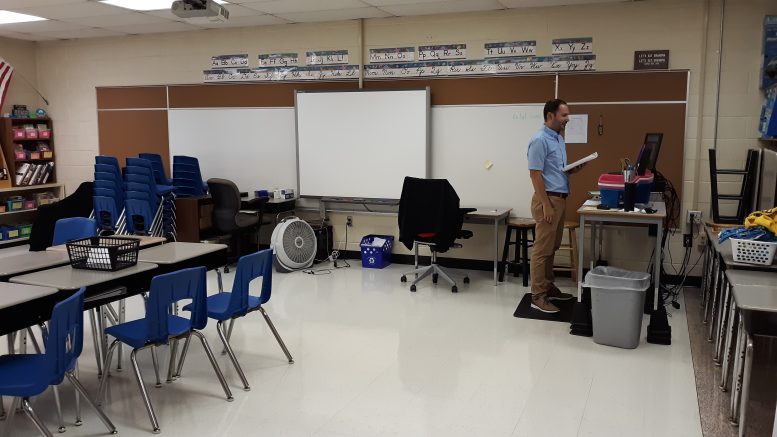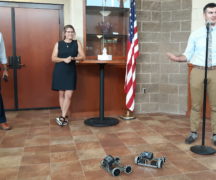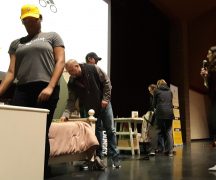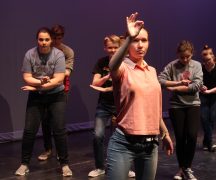By JAN LARSON McLAUGHLIN
BG Independent News
A divided school board decided Thursday evening that Bowling Green City School children will continue to learn remotely from home.
Voting to stick with remote learning were Ginny Stewart, Jill Carr and Norm Geer. Voting against were Bill Clifford and Tracy Hovest.
More than 340 people were watching the virtual school meeting, which got heated at one point.
Stewart assured parents, students and teachers that their voices were heard as the board weighed their concerns about the physical health, emotional wellbeing, and academic growth of students.
“Every bit of feedback, as well as data from the health department has been considered,” she said.
Superintendent Francis Scruci said the staff will follow whichever decision the board made.
“Tomorrow morning at 8 o’clock,” school administrators will be meeting to come up with a plan forward, Scruci said. “Whatever you folks decide tonight, we’ll make it work. We’re going to make lemonade out of lemons.”
The motion made by Geer stated that the district would continue online classes and make improvements necessary to address the needs of students. Those improvements are needed to reach students who are not doing well with the online learning.
The other option on the table Thursday evening was a hybrid model that would have half the students in school on Tuesdays and Wednesdays, and the other half on Thursdays and Fridays.
While some board members were leaning that direction on Tuesday, that changed when it was explained that students would get no teacher instruction on the days they aren’t in school.
The option of elementary students going back first was mentioned, but didn’t get any traction.
Wood County Health Commissioner Ben Robison spoke with the board on Tuesday, and said schools that have good policies in place are not seeing a spread of the virus in classrooms.
But the lingering concern for some of the board members is the abnormally large numbers of COVID cases in Bowling Green because of the university students living in the community.
“I would love to go back to school four or five days a week,” Stewart said. “We cannot do that safely.”
Hovest said that other schools in Bowling Green are making it work – with St. Aloysius and BG Christian Academy being in school four or five days a week, with no outbreaks occurring.
“We look at our surrounding schools and they aren’t putting the lives of staff and students at risk by going to school,” Hovest said. “We are supposed to be educating our students,” but they are getting about half of the standard academic instruction online.
“I think we are doing a disservice to at-risk and special needs students,” Hovest said. “Our community is already doing it and being successful.”
However, Scruci said that just today two classrooms at the Montessori School had to start quarantining due to COVID. He also mentioned that 13 people, including three teachers, from an athletic program at BG City Schools, are now quarantining.
“They were doing their due diligence and it’s still happening,” Stewart said.
With remote learning, those quarantining students and teachers – if they are feeling well enough – can keep working from home.
Stewart said she was considering the hybrid model, but changed her mind when it was explained that students would spend three days a week without teachers.
“Parents are already saying they are exhausted,” she said.
“I know that this seems like an eternity for parents,” Stewart said. But she added that Bowling Green’s COVID numbers continue to be high – and she is not willing to risk the health and safety of teachers and students.
“Be patient and help us work through this,” Stewart said.
Carr agreed that safety must be prioritized.
“What remains an absolute first for me is their health and safety,” she said.
Scruci said there is no perfect plan.
“We care about kids and we care about helping them grow,” he said. “This isn’t a question of if we’re going to get cases. It’s a matter of when.”
“How much are you willing to risk?” Scruci asked.
Carr also stressed that remote learning offers teacher instruction four days a week. “That continuity is so important for a child.”
According to the board, the emails from parents, students and teachers have been evenly split between families wanting to go with the hybrid model and those wanting to stay remote.
Hovest agreed that some COVID cases are inevitable – but she repeated Robison’s statement that schools with protocols in place are not seeing a spread.
“I know our teachers are doing a great job,” she said. “We’re not saying that by sending them back that we don’t care if they live or die.”
Online learning is just not working for some students.
“You’ve got to allow people a choice,” Hovest said.
“We can’t keep living in the ‘what if,’’’ she said. “What if COVID doesn’t go away? Are we just going to keep going remote?”
Stewart objected to that characterization.
“I don’t think that’s fair,” she said. “To insinuate that this board is going to drag this out” is not accurate.
Stewart reminded that on Tuesday she asked two board members to work with Scruci and administrators about identifying thresholds for when the district can go back to in-school learning. She is hopeful that students can go back to in-person classes in February when the new semester starts.
Clifford contested the idea that would happen, considering the flu season will be here along with COVID through March.
“I for one feel if we don’t do it now, I don’t see it happening in January,” he said.
Clifford agreed now isn’t perfect timing for returning to school, but added that many families and teachers have serious concerns about their students’ emotional wellbeing.
“The social-emotional piece for me is critical,” he said.
Hovest agreed, saying that personal interaction with teachers is so important. “That can’t be filled by a program,” she said.
Others shared those concerns, but suggested those needs could be met in other ways than returning to the classroom.
Geer and Carr suggested that the district find creative ways to meet the emotional needs of students, possibly providing some face-to-face time.





